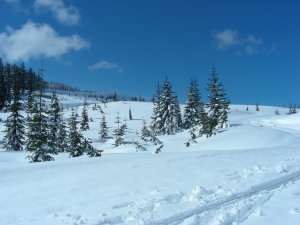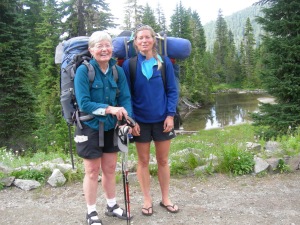Gentle Reader,
This is just in from the Johns Hopkins:
Knee Pain: An Early
Warning Sign of Osteoarthritis
Osteoarthritis is the most common form of arthritis, affecting an estimated 27 million people in the United States. By age 40, approximately 90 percent of us have at least some signs of osteoarthritis that can be seen on X-rays of the weight-bearing joints (the hips and knees, for example), but symptoms of pain and stiffness usually don’t start until later in life.
Now, researchers from Canada report that knee pain may be an early warning sign of osteoarthritis (OA). Their study was published in the journal Arthritis Care & Research(Volume 62, page 1691).
The researchers obtained X-ray and MRI scans of 255 people with knee pain who were 40 to 79 years old. Pre-radiographic osteoarthritis (signs of cartilage damage seen on MRI but not yet evident on X-ray) was identified in 49 percent, and radiographic osteoarthritis (signs of cartilage damage on X-ray) was identified in 38 percent. Only 13 percent had a normal X-ray and MRI.
Factors linked to a higher chance of having radiographic osteoarthritis or pre-radiographic osteoarthritis included abnormal gait (nearly 11 times higher risk), older age (nearly three times higher risk for each 10-year increase), playing sports regularly after age 20 (35 percent higher risk for each 10 years), knee swelling and difficulty fully stretching the knee joint.
The bottom line: If you have knee pain, don’t ignore it. Early identification of osteoarthritis can lead to early treatment and relief.
Duh! This is a no brainer, isn’t it? My question to you and to them, what are we supposed to do about it? We have the early warning signs. Now what?
In these blog posts, I have explored various modalities of care and presented strategies for alleviating pain and slowing down the onset of severe osteoarthritis. If you are a new reader, I suggest you explore back posts for suggestions.
The bottom line is two fold:
1. Get to your ideal weight and stay there. Even 15 pounds off your current weight (if you are over weight) will make a difference in your joints.
2. Keep moving. Find something to do that is pleasurable and that you will look forward to each day and DO IT. Do NOT, under any and all circumstances, stop moving.
I have a great friend who was in a wheel chair with her osteoarthritis and on multiple medications to manage the pain. A friend persuaded her to seek the counsel of a chiropractor who specializes in blood work and supplementation (primarily by Shaklee). He analyzes the blood and makes recommendations about diet and supplements. The most important advice to Luanne was find something to do that she loved. She didn’t like walking, hiking, dancing, skiing, roller blading, mountain climbing. Nothing pleased her. Nothing made her want it more than the pain she had to endure to try out the activity.
One day she was walking near a dock where people were stepping in to sculls, single and double. She was invited to take a turn and fell in love with sitting in the slim, fast boat down low in the water. As she became more proficient, she got off her medications and ate the better diet along with the prescribed supplements. She became pain free. Luanne went on to win national championships in single scull racing. Today she is slim, beautiful and healthy.
Find the movement of your choice. Maybe it’s turning on the TV or radio to your favorite jazz or Latin music station. There’s someplace in your house where you can dance to your favorite music. Maybe you’d enjoy a little trampoline. It takes up a tiny space and is reputed to help increase bone density. Whatever it is, Go for it.
The doctor’s name is Dr. Richard Brouse. I send him my blood for diagnosis and suggestions for diet and supplements. Having his analysis and prescription for supplements makes my vitamin purchases tax deductible. (I am not giving tax advice. I am not qualified to do so. This is just what I do and have done for 25 years.) It is expensive but worth it. After all, you are going to pay for your health one way or another. Why not pay now and avoid the steep costs looming ahead of you, not to mention the loss of work and play time.
Dr. Brouse will suggest food supplements by Shaklee. In another post, I recommend the ones that are most effective at restoring your body to good health and alleviating arthritis pain. (You can browse the Product Guide here.)
When you take your knee pain to the doctor, they will most likely tell you to expect arthritis in the near future and predict knee replacement therapy down the road. I had these predictions in 1989. I have no knee pain and have never had knee replacement. I take a lot of supplements. People who watch me swallow a handful of them, think I’m nuts. All I can say is that I love being able to hike to Mt. Rainier pain free, to be able to dance the salsa, and run fast across the street, to scramble down the bank at Shark’s Reef on Lopez Island, to last physically in the art museum longer than my brain can take all that stimulation.
I wish the same for you.
Now, tell me in the comment section, what your thoughts are about your early warning signs, if you have any. And by all means let us all know what supplements you have found that help. Did you sign up to get the notification of the next posting?
Fondly, Betsy
Be Well, Do Well and Keep Moving
BetsyBell’s Health4u
206 933 1889 1 888 283 2077
betsy@hihohealth.com





